FLOWERS
16 Dangerous Plants To Watch Out For In The Garden
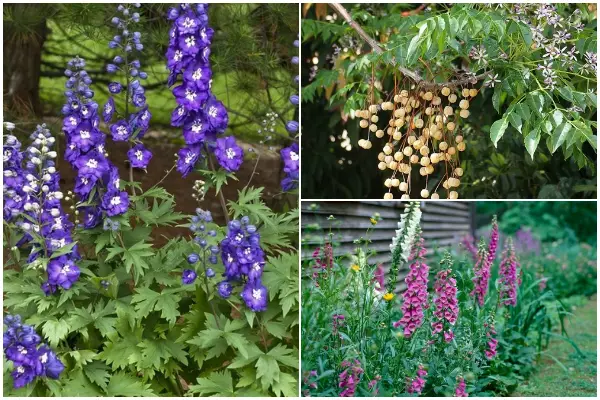
Sometimes, we can be in danger from some of the plants. They are normal plants and we easily see them everywhere, even right in our garden but we don’t know about the poison inside them. Many gardeners are so surprised to discover that they are growing some of the world’s deadliest plants in their own backyards. That is the reason we’ve listed several plants with lethal tendencies you should know and avoid them.
1 Daffodils
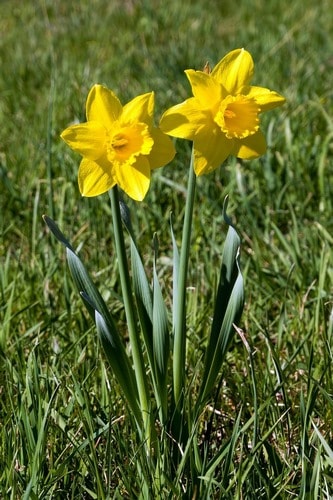 Image source: freerangestock
Image source: freerangestock
Daffodils grow from bulbs that could be mistaken for edible food, like an onion. Daffodils are common ornamental plants with bright, cheery, and mostly toxin-free flowers. Most daffodils are deer- and vermin-resistant, but gardeners shouldn’t overlook the dark side of this plant. The Greek philosopher Socrates sometimes referred to daffodils as the “Chaplet of the infernal Gods” because of the plant’s numbing effect.
2 Hemlock
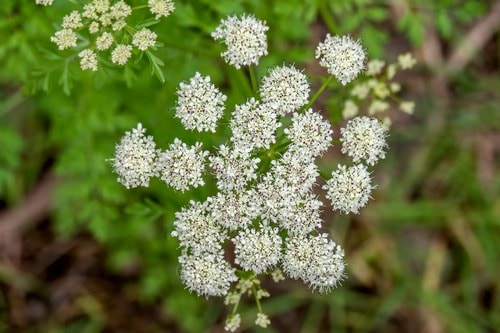 Image source: nypost
Image source: nypost
All parts of the plant contain relatively simple alkaloid coniine which causes stomach pains, vomiting, and progressive paralysis of the central nervous system.
3 Angel’s Trumpet
 Image source: fast-growing-trees
Image source: fast-growing-trees
Angel’s trumpets are woody-stemmed bushes with pendulous flowers that hang like bells. They are decorative additions to the garden because of the elegant flowers. However, the catch is that all parts of these plants contain dangerous levels of poison and may be fatal if ingested by humans or animals.
4 Doll’s Eye
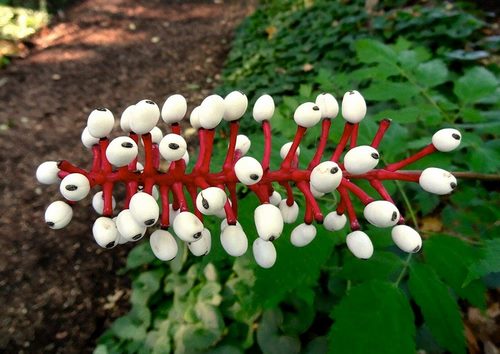 Image source: amazon
Image source: amazon
If consuming the fruit of a doll’s eye plant (or white baneberry) could kill you. The berries contain cardiogenic toxins that can have an immediate sedative effect on cardiac muscle tissue. Symptoms of poisoning include burning of mouth and throat, salivation, severe stomach cramps, headache, diarrhea, dizziness, and hallucinations. Ingestion of the berries can eventually lead to cardiac arrest and death.
5 Castor Beans
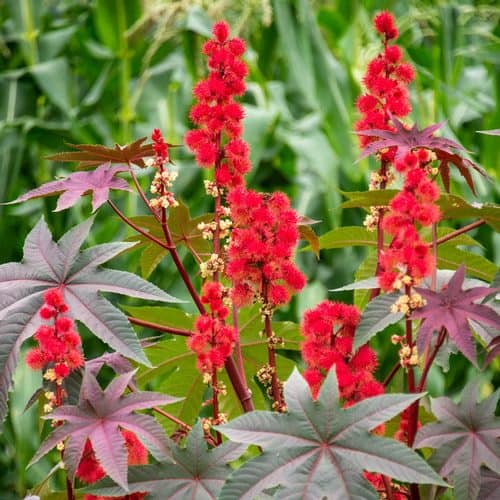 Image source: gurneys
Image source: gurneys
Castor beans contain one of the most poisonous substances in the world, ricin. Just one castor bean has enough ricin to kill an adult within a few minutes. However, castor bean plants are frequently grown for decorative purposes, even in parks and public places.
6 Monkshood
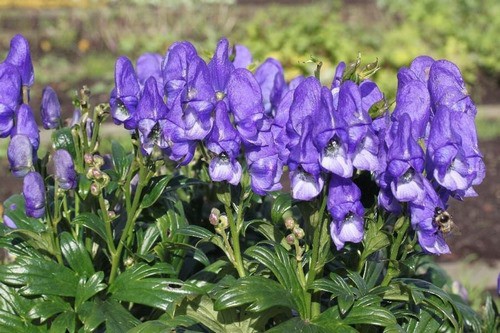 Image source: floraplanet
Image source: floraplanet
Monkshood has a long tradition as a deadly plant and was used by ancient warriors to poison the water of their enemies. It was also once used as a popular werewolf-detection tool. In 2015, a gardener died of multiple organ failure after brushing past this deadly purple flowering plant on the estate where he was working in the U.K.
7 Apples
 Image source: bangaloreagrico
Image source: bangaloreagrico
Eating an apple a day is good for health, but apple seeds are in contrast. The seeds contain cyanogenic glycosides, making them mildly poisonous. If you consume enough of the seeds, you could ingest a fatal dose. So, to be safe, you should remove the seeds before eating.
8 White Snakeroot
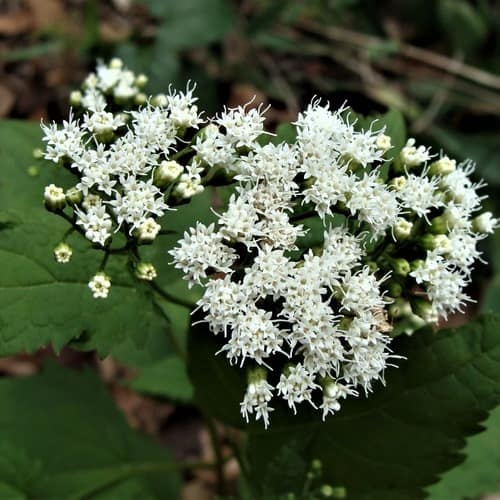 Image source: anps
Image source: anps
White snakeroot contains the toxin tremetol, which can be poisonous if consumed directly or second-hand. When snakeroot is eaten by cattle, the animals’ beef and milk become contaminated with the toxin, and ingesting those substances can lead to a condition called milk sickness.
9 Stinging tree
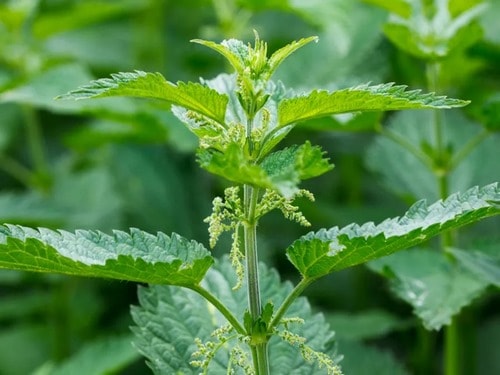 Image source: britannica
Image source: britannica
Dendrocnide Moroides are the deadliest and most potent stinging nettle in the world. Accidentally brushing past any part of this plant or its stinging relatives can deliver a potent toxin that will cause a painful stinging sensation lasting for days or even months. A severe sting from this plant will cause a severe allergic reaction in pigs, horses, dogs, and many other animals, but there’s not as much evidence that it has killed humans.
10 Deadly Nightshade
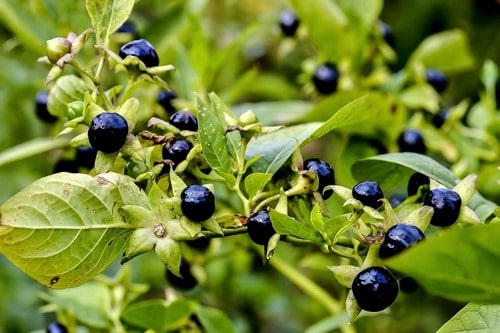 Image source: petalrepublic
Image source: petalrepublic
Both the foliage and the berries of this plant are extremely toxic. The nightshade family includes common food plants, including potatoes, tomatoes, eggplants, and chili peppers. So, humans and pets should avoid potato and tomato foliage and vines in the garden.
11 Larkspur
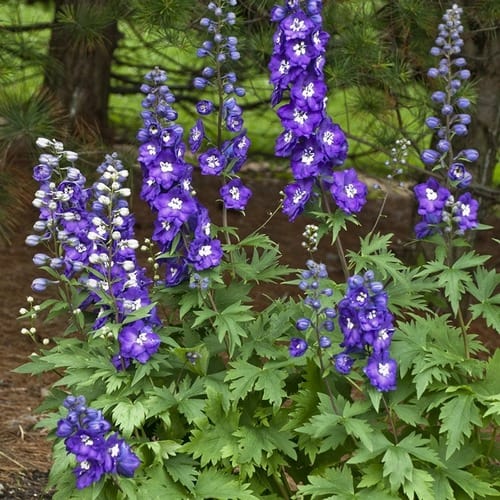 Image source: plantaddicts
Image source: plantaddicts
The seeds and young plants of the larkspur are toxic to both people and animals. Toxicity decreases as the plant ages. Symptoms of poisoning include general weakness and muscle spasms, as well as abdominal pain and nausea. Eventually, it can lead to respiratory distress, paralysis, and death.
12 Foxglove
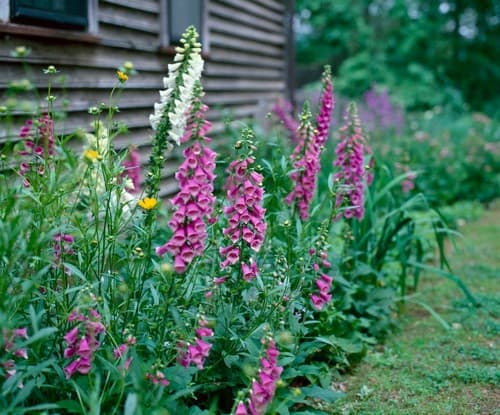 Image source: pallensmith
Image source: pallensmith
The seeds, stems, flowers, and leaves of the foxglove plant are poisonous. Symptoms can also include digestive issues, headaches, blurred vision, and confusion, and can eventually lead to death.
13 Melia Azedarach
 Image source: myseeds
Image source: myseeds
In Australia, it’s known as white cedar. B Its fruits contain a mixture of poisons, including neurotoxins, which can harm humans (as few as 6 to 8 berries can kill a person). Birds, however, can tolerate them, so they eat the fruit and spread the seeds.
14 Rosary Pea
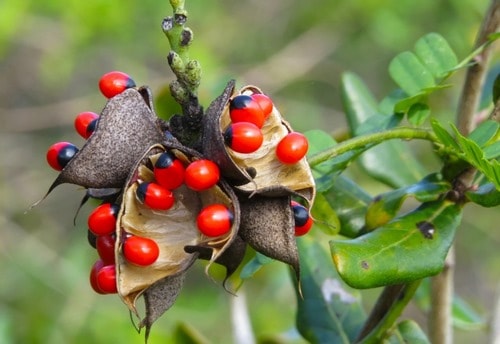 Image source: exploreorca
Image source: exploreorca
This plant is actually deadly. They are used in jewelry around the world. Many jewelry makers have died after pricking a finger while handling a rosary pea. The poison contained within the seed is abrin, a close relative of ricin and one of the most fatal toxins on Earth.
15 Oleander
 Image source: gardenerspath
Image source: gardenerspath
Oleander is one of the most toxic, commonly grown garden plants in the world, and oddly enough, it’s often found in schoolyards. Ingesting any part of this plant can be deadly, especially for children. Even smoke from burning oleander can be fatal.
16 European Yew
 Image source: britainsbestguides
Image source: britainsbestguides
Nearly all parts of this European Yew tree can be poisonous. The exception is the red fleshy aril that surrounds the toxic seeds. And the aril is frequently eaten by birds. Some people have chosen to commit suicide by ingesting the leaves or the seeds, both of which contain a poison called a taxane. Sometimes there are no symptoms of poisoning and a person or animal can die within a few hours of ingesting yew seeds or leaves. If there are symptoms, they can include a fast heart rate, muscle spasms, and labored breathing.
FLOWERS
15 Best Fragrant Flowers That Bloom at Night
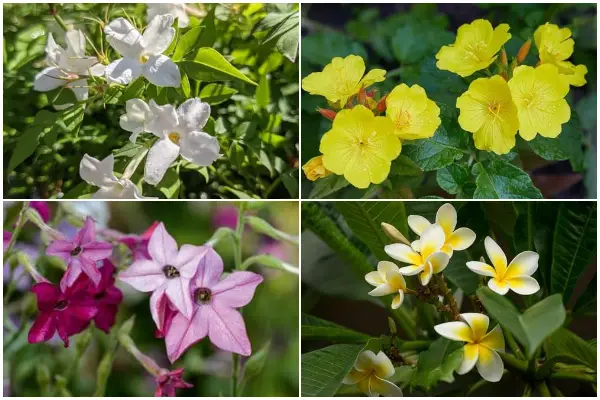
Whether indirect or direct sun, most plants need a source of light for their growth, but there are some flowering plants that can bloom in the dark of the evening. Especially, they emit a smell stronger and sweeter at night.
Here are the 15 Best Fragrant Flowers That Bloom at Night to add to your yard with a natural, sweet-smelling ambiance.
1. Gardenias
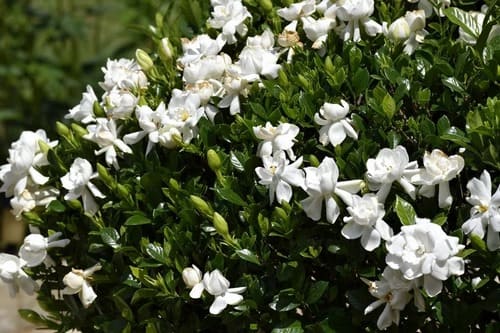 Image source: gardendesign
Image source: gardendesign
Gardenias not only display strongly scented white flowers but also bring glossy, bright green leaves. They grow easily in containers and raised beds.
2. Jasmine
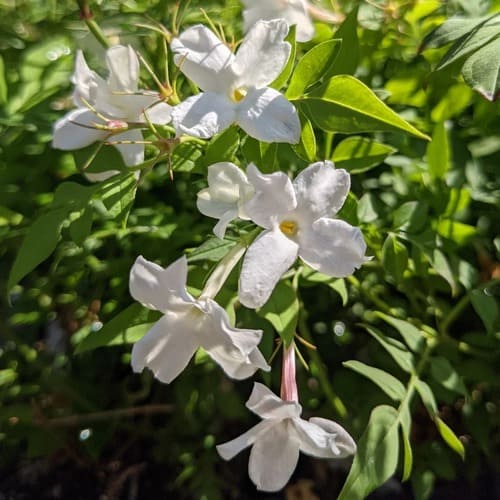 Image source: easytogrowbulbs
Image source: easytogrowbulbs
Most jasmines have fragrances. They are vining shrubs that grow quickly if given good soil and regular sunlight.
3. Plumeria
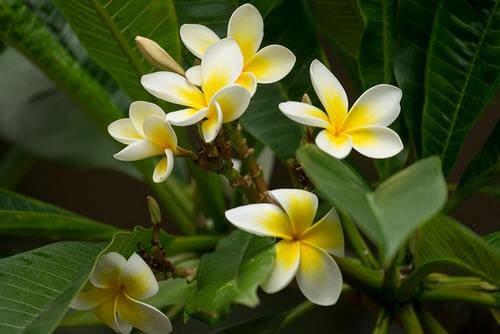 Image source: animals.sandiegozoo
Image source: animals.sandiegozoo
Plumeria is grown as a shrub or small tree in warm climates. The sweet-scented flowers with elegant colors ranging from white to yellow to pink and variegated. Its blooming time lasts from spring through fall.
4. 4 O’Clock
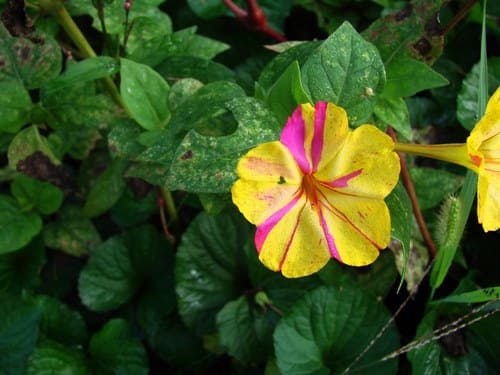 Image source: flickr
Image source: flickr
This flower ranges in a variety of colors such as yellow, red, pink, white, and variations thereof. They are mounding plants that reach heights of 3 to 4 feet. It grows happily in full sun and requires little water.
5. Moonflower
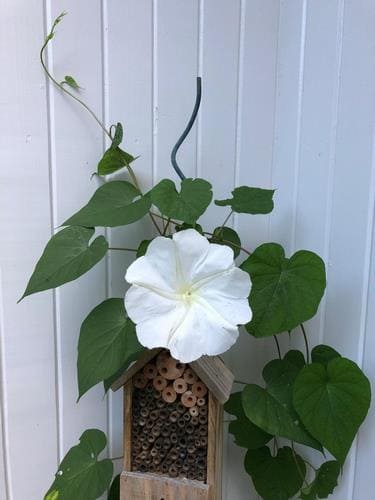 Image source: pilotonline
Image source: pilotonline
Moonflower showcases white flowers appearing in the evening. The flowers are visible and extremely fragrant throughout the night. The leaves also look beautiful with heart-shaped, and the blooms resemble funnels. It is a fast-growing vine, you can grow it and take advantage of its shade for an arbor, patio roof, gazebo, or trellis.
6. Yellow Evening Primrose
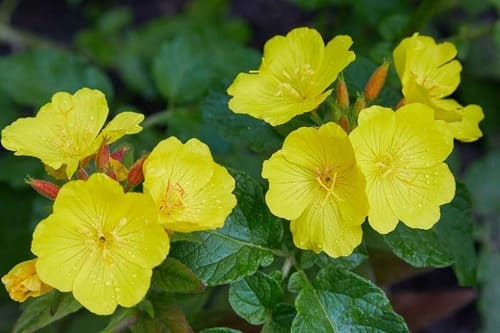 Image source: gardenia
Image source: gardenia
Yellow Evening Primrose offers yellow flowers that attract moths, hummingbirds, honeybees, and bumblebees, which pollinate the primrose. This flower is easy to grow and does well in planting zones from 5 – 8.
7. Angel’s Trumpet
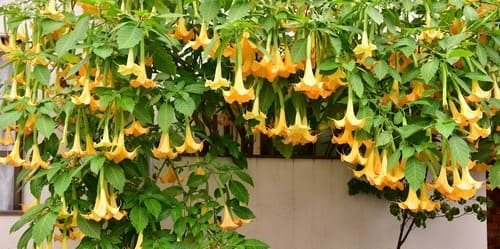 Image source: marthastewart
Image source: marthastewart
Angel’s Trumpet offers trumpet-shaped flowers in white, pink, or yellow. Its fragrance emits at night. It grows well in sun or shade and needs regular watering
8. Mexican Orange
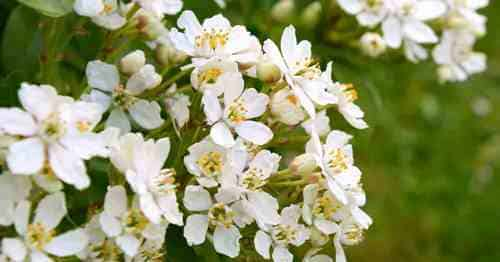 Image source: plantcaretoday
Image source: plantcaretoday
Mexican Orange brings clusters of sweet-smelling white flowers that resemble orange blossoms just like orange jasmine attracting bees. The flowers open in late winter or early spring and bloom continuously for a few months, then intermittently throughout the summer.
9. Flowering Tobacco
 Image source: gardensillustrated
Image source: gardensillustrated
The flowers of the plant open after dark, on cloudy days, and are especially fragrant at night. Its leaves are large, oval leaves, with sticky stems.
10. Evening Primrose
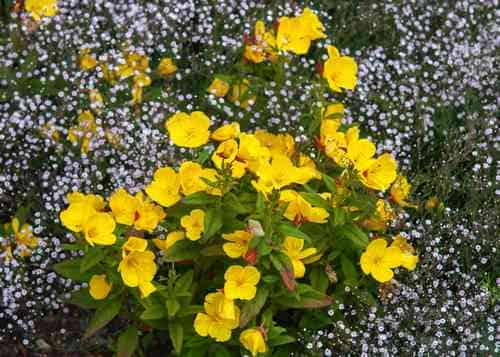 Image source: thespruce
Image source: thespruce
Evening Primrose can attract night-flying insects which are drawn to the flower’s lovely scent. From spring to autumn, white to pink blooms are heavy. The plant can tolerate drought and grows well in poor soil or rocky areas and likes full sun.
11. Casa Blanca Lily
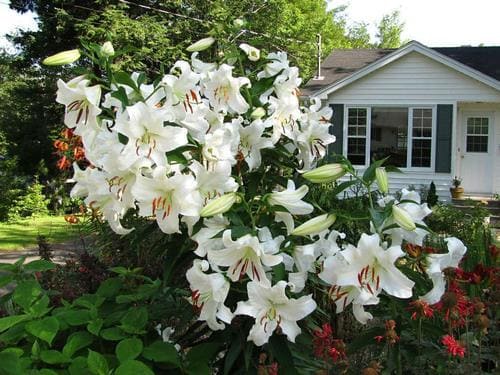 Image source: yourgardenspecialist
Image source: yourgardenspecialist
Casa Blanca Lily gives large white blooms with a sweet aroma. It looks great when planted in groups of three or five identical bulbs and grows happily in containers.
12. Hellebore
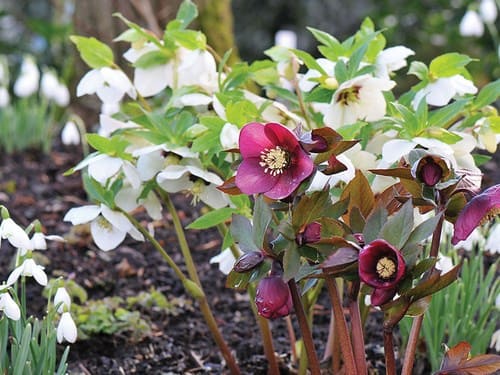 Image source: ashwoodnurseries
Image source: ashwoodnurseries
The flowers of most hellebores are shaped like bells or cups, either facing outward or drooping. It grows well in partial or full shade.
13. Wax Flower
 Image source: atozflowers
Image source: atozflowers
Wax Flower is a tropical plant that shows off waxy leaves and flower clusters. The flowers are creamy-white with a pink center and produce a lovely fragrance that is stronger at night. It is a slow-growing, woody vine and looks great in hanging baskets on patios and porches.
14. Kahili Ginger
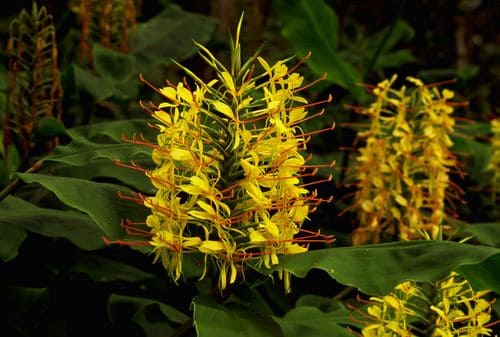 Image source: hawaiianflowers
Image source: hawaiianflowers
The flowers of Kahili Ginger are yellow with red stamens and produce a rich fragrance, especially during late summer evenings.
15. Heliotrope
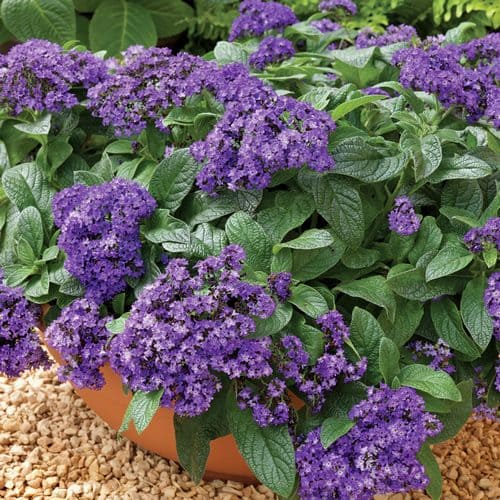 Image source: malmborgsinc
Image source: malmborgsinc
On summer days, the Heliotrope showcases flowers that come in purples, blues, violets, and whites. Most do well in pots and containers and need well-drained soil.
FLOWERS
15 Best Flowering Shrubs and Bushes for Colorful Landscape Year-round

Most of the shrubs and bushes are easy to grow and do not require taking care of. Better still, they can make your garden more beautiful as well as add some more interest to your yard more attractive. They bring gorgeous foliage and open beautiful blooms all season of the year to liven up all space they grow. Apart from bearing constant blooms, some of them can bloom for a long time to make your garden always full of colors.
1 Roses
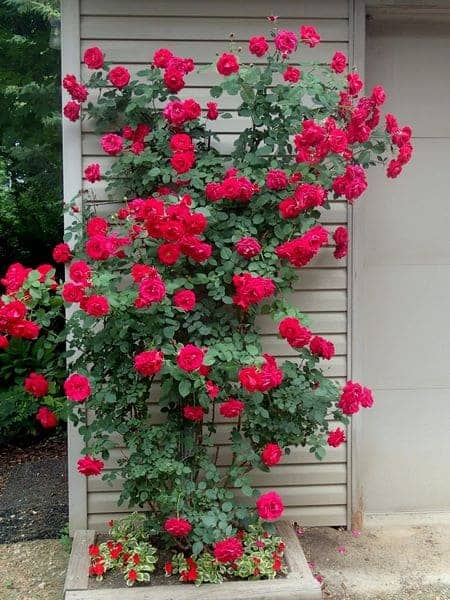 Image source: knechts
Image source: knechts
There are many different Rose varieties to choose from, so you can grow the type you love growing. Grow it as an informal hedge along a walkway or planting bed.
2 Rhododendron
 Image source: vecteezy
Image source: vecteezy
Rhododendron open blooms in a variety of hues in the spring. The red and pastel tints are the most widely available. Grow it for a specimen shrub, hedge, or woodland garden.
3 Mock Orange
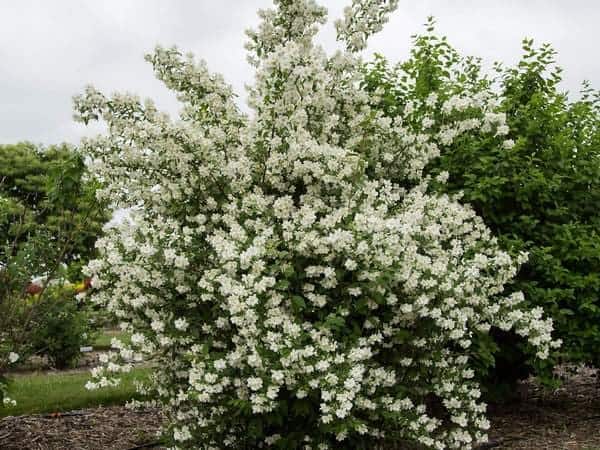 Image source: campbellsnursery
Image source: campbellsnursery
The blooms of Mock Orange spread sweet perfume. That’s the fragrance that its flowers release when they open in late spring to early summer. You can grow the plant for a walkway or patio where you can savor the fragrance.
4 Mountain Laurel
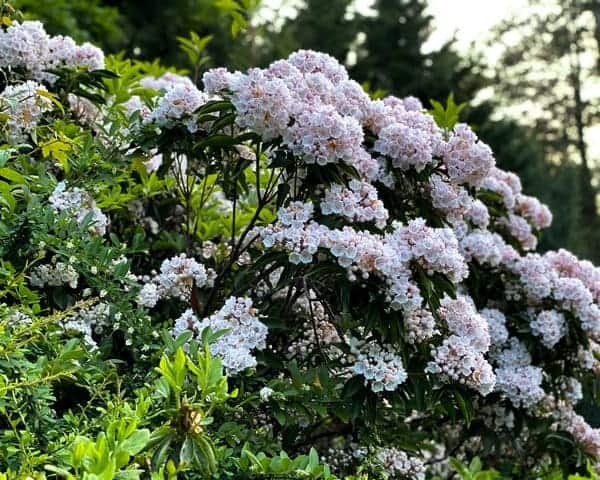 Image source: homesandgardens
Image source: homesandgardens
Mountain Laurel shows off pink buds in spring that open to white cup-shaped flowers. The plant is a stand-out evergreen shrub because it tolerates shade.
5 Lilac
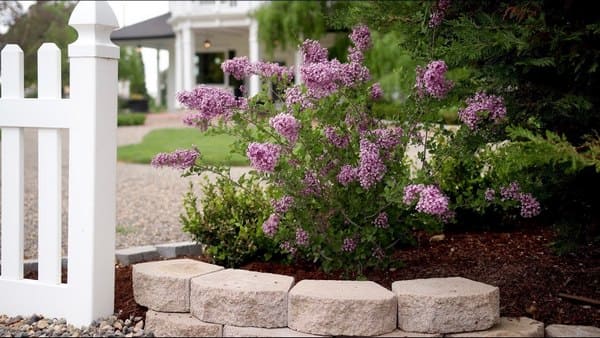 Image source: worldsterra
Image source: worldsterra
Lilac opens its flowers in late spring and early summer. Its flower timing, fragrance, and color depending on the variety. You can grow it for hedge or specimen shrub.
6 Bottlebrush Buckeye
 Image source: whatgrowsthere
Image source: whatgrowsthere
The flowering plant features long white flower spikes that appear in summer above the green leaves. Its flowers especially attract hummingbirds. Grow it for butterfly or wildlife gardens.
7 Azalea
 Image source: Azalea
Image source: Azalea
Azalea brings a rainbow of hues flowers in the spring. You can grow this flower in small varieties for bed edging or line a walkway, large trees for hedges, or in wildlife or woodland gardens.
8 Winter Heath
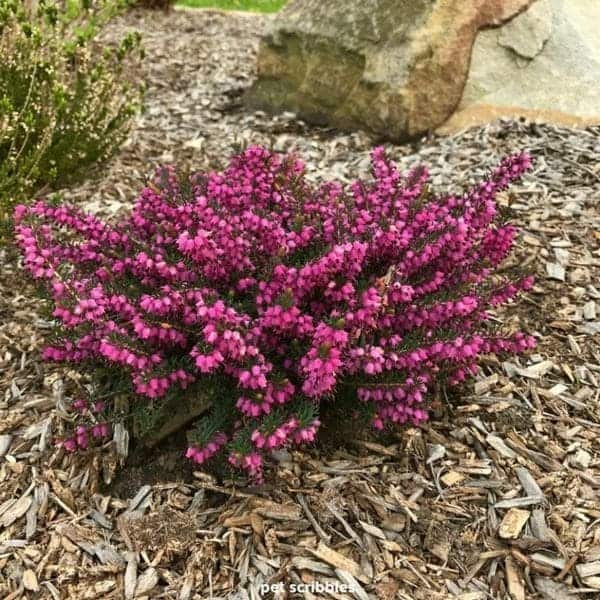 Image source: petscribbles
Image source: petscribbles
From winter into early spring, the Winter Heath offers bright blooms blanket ‘Kramer’s Red’ winter heath. And the plant has needle-like, evergreen leaves. Grow it for a groundcover or pair it with conifers for an eye-catching contrast.
9 Pieris
 Image source: provenwinners
Image source: provenwinners
Pieris showcases clustered, dangling blooms with bright pink colors. Its flowers open from deep red buds in late winter and early spring. You can grow it for a foundation planting, shrub border, or hedge.
10 Weigela
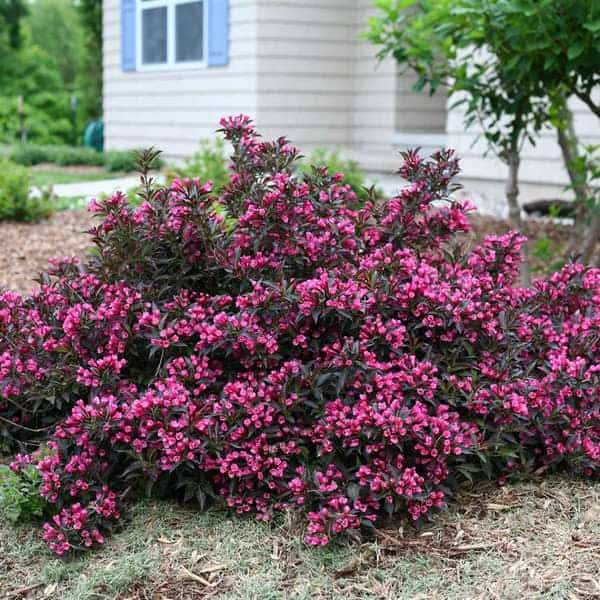 Image source: springmeadownursery
Image source: springmeadownursery
In late spring, Weigela shoots up pink blooms that sparkle against dark leaves and are a hummingbird favorite. You can grow it for perennial beds, wildlife gardens, and even containers.
11 Pineapple Guava
 Image source: flickr
Image source: flickr
Pineapple Guava opens incredibly exotic flowers that are perfectly edible, as is the fruit that ripens in fall. That makes it a great option for color as well as flavor.
12 Virginia Sweetspire
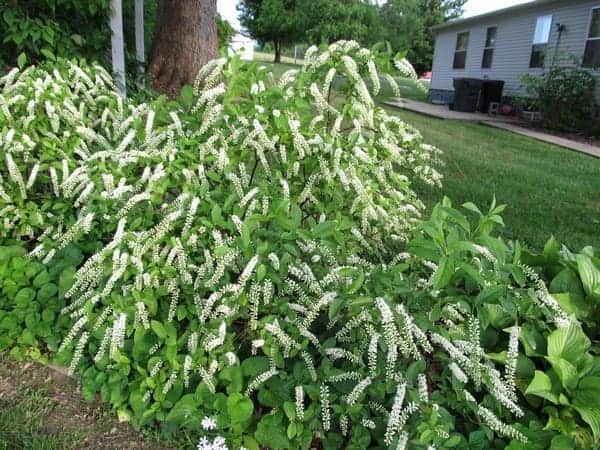 Image source: whatgrowsthere
Image source: whatgrowsthere
Virginia Sweetspire brings white flowers that open in spikes starting in early to mid-summer. Its blooms release a sweet fragrance and beckon pollinators like butterflies and bees. Grow it for butterfly or rain gardens.
13 French Hydrangea
 Image source: southernliving
Image source: southernliving
French Hydrangea opens large flower heads that appear in early summer and linger well past frost. The flowers come in different colors including pink, blue and white varieties. This plant gives its beauty to liven up for mixed planting beds, woodland gardens, or even containers.
14 Winter Daphne
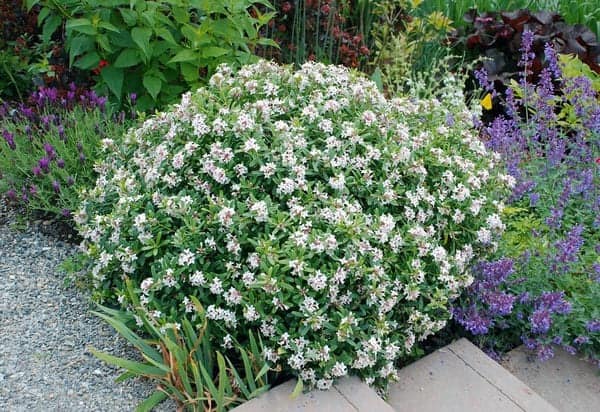 Image source: havlis
Image source: havlis
Winter Daphne displays pink flower buds that open to reveal white blooms bursting with perfume. Grow it in a dappled shade near an entry where you can savor the scent.
15 Abelia
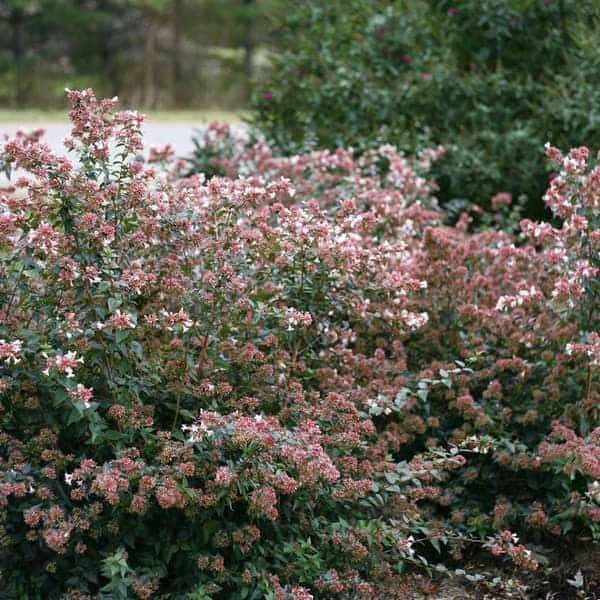 Image source: springmeadownursery
Image source: springmeadownursery
Abelia is a prolific bloomer lasting through summer and into fall. The pastel blooms come in shades of white, yellow, and pink. It is a tough plant so you can grow it easily.
FLOWERS
15 Beautiful Flowers with Their Meanings For Life

Looking for gifts to present someone special in the upcoming time such birthday or celebration, check out 15 Beautiful Flowers with Their Meanings below to choose a suitable flower for each purpose in special events.
Each flower has its own beauty and also has its own meaning. There are flowers that represent friendship while others symbolize love. With these meanings, flowers always are chosen as gifts to send messages as well as express feelings to relatives and friends.
1. Daisies
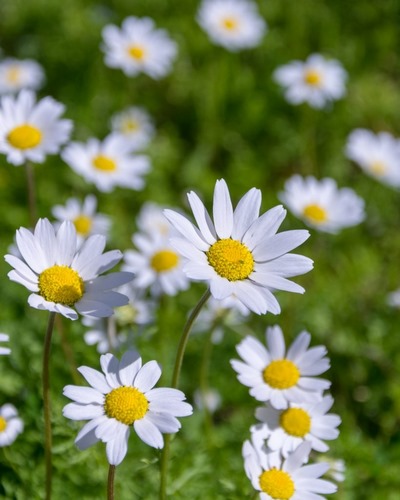 Image source: lovingly
Image source: lovingly
Daisies signify purity, innocence, loyalty (especially in love), beauty, simplicity and patience. There are also overtones of love conquering all.
2. Hyacinths
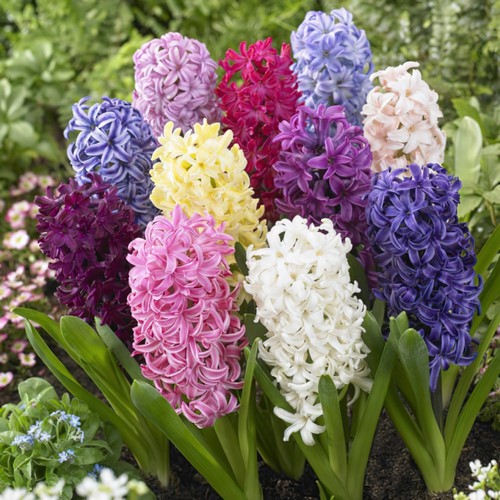 Image source: bostonbulbswholesale
Image source: bostonbulbswholesale
In the language of flowers, hyacinths have a decidedly playful overtone. They represent games, playful joy, rashness, and sport. They can also show an apology, particularly purple hyacinths.
3. Cyclamens
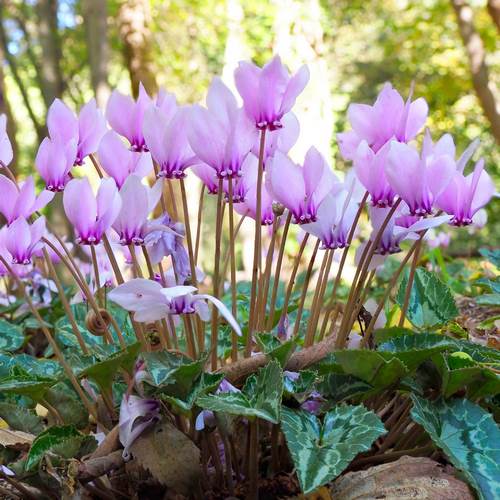 Image source: easytogrowbulbs
Image source: easytogrowbulbs
These native flowers of the Mediterranean area, with their bowed heads, also hold physical hints as to their meaning. The symbolism of the cyclamen is resignation or farewell.
4. Lilies
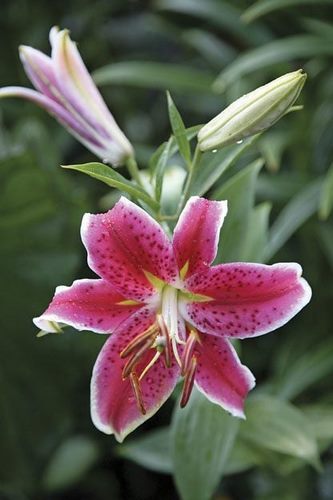 Image source: birdsandblooms
Image source: birdsandblooms
Lilies can convey a whole host of messages, depending on their type and color. The overall message, however, is one of chastity, virtue, majesty, beauty, faith, wisdom, pride and chivalry.
5. Roses
 Image source: homegardenandhomestead
Image source: homegardenandhomestead
One can hardly discuss flower meanings without a discussion of the many varied meanings in roses. As with several others, roses can mean a whole host of things depending on color and other factors. Although known for being a symbol of love, passion and perfection, many other overtones and meanings can be conveyed.
Burgundy Rose – beauty within; hidden beauty
Coral Rose – desire
Lavender Rose – enchantment; love at first sight
Rose Leaf – “you may hope”
Moss Rose – confession of love
Orange Rose – enthusiasm or fascination
Peach Rose – admiration, appreciation, and gratitude; or modesty
Pink Rose – happiness, thankfulness, appreciation, gladness, friendship, sympathy
Red Rose – love, passion, beauty, remembrance, courage
White Rose – purity, innocence, friendship, virtue
Yellow Rose – joy, friendship; but also jealousy or slighted love
Red and White Roses – unity
Red and Yellow Roses – congratulations
Yellow and Orange Roses – passion
Thornless Rose – love at first sight
6. Chrysanthemum
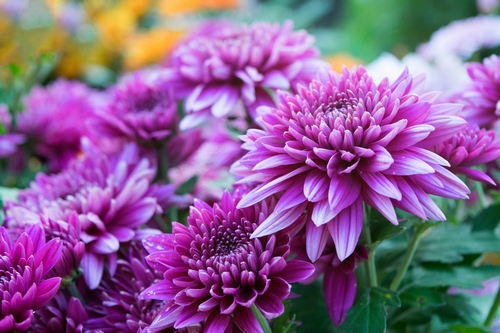 Image source: ehow
Image source: ehow
The birth flower of November, the chrysanthemum’s overall message is one of happiness, cheerfulness, joy, and optimism. There are subtler meanings to some of the colors.
Red Chrysanthemum – a declaration of love, a simple statement of ‘I love’
White Chrysanthemum – truth and loyal love
Yellow Chrysanthemum – slighted love
7. Irises
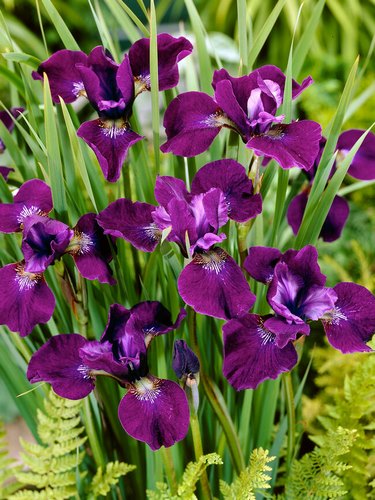 Image source: bluestoneperennials
Image source: bluestoneperennials
Irises have a very noble symbolism; they represent wisdom, faith, hope, valor, and valued friendship. They can also mean ‘my compliments’, or a promise in love.
8. Orange Blossoms
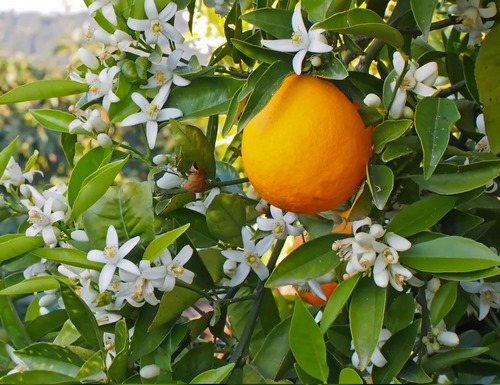 Image source: twinings
Image source: twinings
Orange blossoms have long been popular in wedding flower arrangements, and for good reason; the symbolism behind them are messages of purity, eternal love, innocence, marriage, and fruitfulness.
9. Azaleas
 Image source: plantinfo
Image source: plantinfo
As with many flowers, the overtone of azaleas has to do with love, but it is a message of fragile passion, temperance, and a subtle plea to take care of one’s self for the sender. They are also a symbol of womanhood in China.
10. Tulips
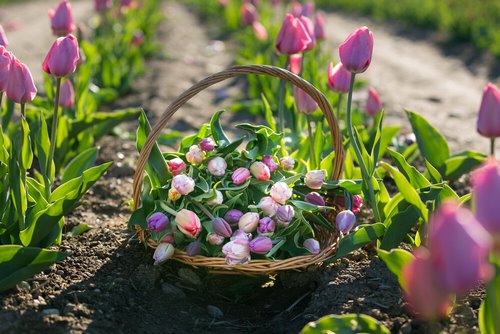 Image source: ferjulians
Image source: ferjulians
The primary messages of tulips are of fame and perfect love. As with other flowers, the colors each have their emphasis.
Red Tulips – declaration of love, or a plea for the recipient to believe the sender
Yellow Tulips – “there’s sunshine in your smile”; also hopeless love
Cream Tulips – “I will love you forever”
Variegated Tulips – says the recipient has beautiful eyes
11. Gladiolus
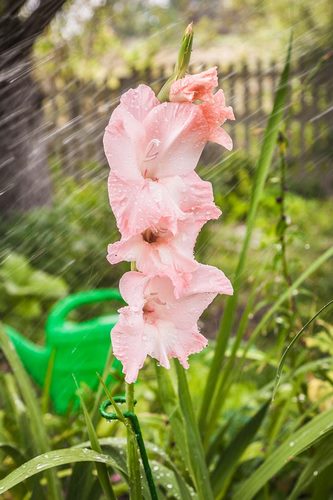 Image source: gardenerspath
Image source: gardenerspath
Named for their leaves which resemble swords, or “gladius” in Latin; one of its meanings is also based on this, telling the recipient that she pierces the heart like a sword. It also represents strength of character, preparedness, sincerity, and love at first sight.
12. Baby’s Breath
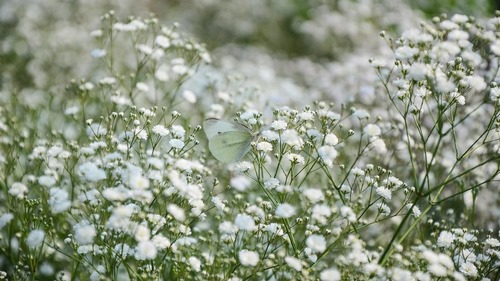 Image source: bunnings
Image source: bunnings
Just looking at this tiny, delicate white flower and at its name gives a good hint as to its meaning. Although it is now commonly used as a ‘filler’ for bouquets and other arrangements, it has its meaning in and of itself. It symbolizes purity of heart and innocence.
13. Violets
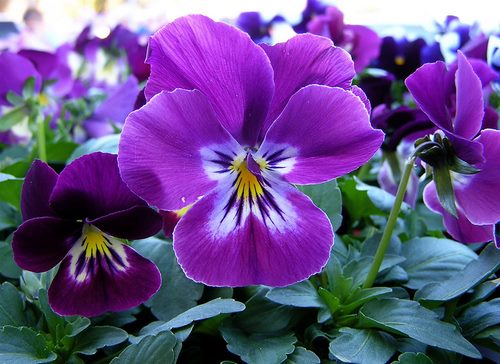 Image source: atozflowers
Image source: atozflowers
Violets represent modesty, faithfulness, understated beauty, affection, “you’re in my thoughts”, innocence. they can also be a sort of plea, to take a chance on happiness.
14. Daffodils
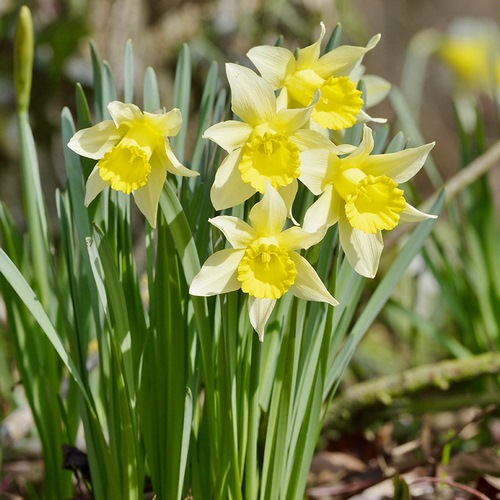 Image source: woodland-bulbs
Image source: woodland-bulbs
The birth flower of March, the daffodil has several possible meanings to choose from. Rebirth and new beginnings are perhaps the most obvious for this early-blooming flower. Also included are regard, chivalry, unrequited love, and eternal life. A single daffodil can also carry a message of misfortune.
15. Carnations
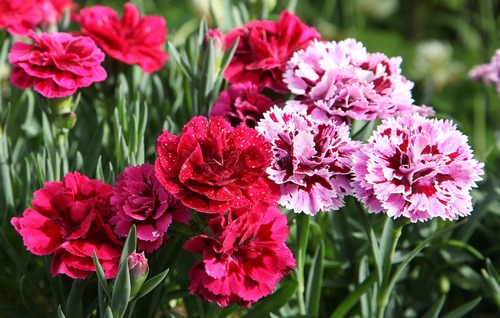 Image source: masterclass
Image source: masterclass
There are several flowers who have an overall meaning, and then a separate meaning for individual colors; the carnation is one such. The overall meanings include fascination, distinction, impulsiveness, joy, and divine or devoted love. It is also the birth flower for January.
Pink Carnation – symbolic of enduring love, particularly with a maternal overtone
Purple Carnation – capriciousness, unpredictability
Red Carnation – admiration, pride, fascination, and an aching heart
White Carnation – these flowers have a twofold message. On the one hand, they symbolize innocence, sweetness, and purity. On the other hand, they represent pure or ardent love, and the strength and enduring qualities of love.
Striped Carnation – refusal, but regretful, without bitterness.
-
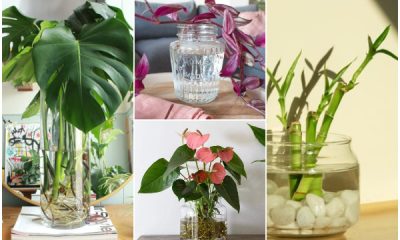
 GARDEN10 tháng ago
GARDEN10 tháng ago15 Houseplants That Grow Well in Vases with Water
-

 FUNNY1 năm ago
FUNNY1 năm ago20 Funny Grammar Fails That Will Make You Laugh All Day
-

 GARDEN1 năm ago
GARDEN1 năm ago4 Easiest Ways to Get Free Plants
-

 GARDEN11 tháng ago
GARDEN11 tháng ago30 Shimmering Side Yard Landscape Ideas
-

 FUNNY1 năm ago
FUNNY1 năm ago30 Funny and Perplexing Photos That Make You Laugh All Day
-

 ANIMALS1 năm ago
ANIMALS1 năm agoBritish Angler Caught Huge 67-Pound Goldfish in the World
-

 FUNNY1 năm ago
FUNNY1 năm ago30 Weirdest Things That People Came Across On The Subway
-

 ANIMALS1 năm ago
ANIMALS1 năm agoMore Than 3 Million People Baffled by Video of Strange Figure on the Beach



